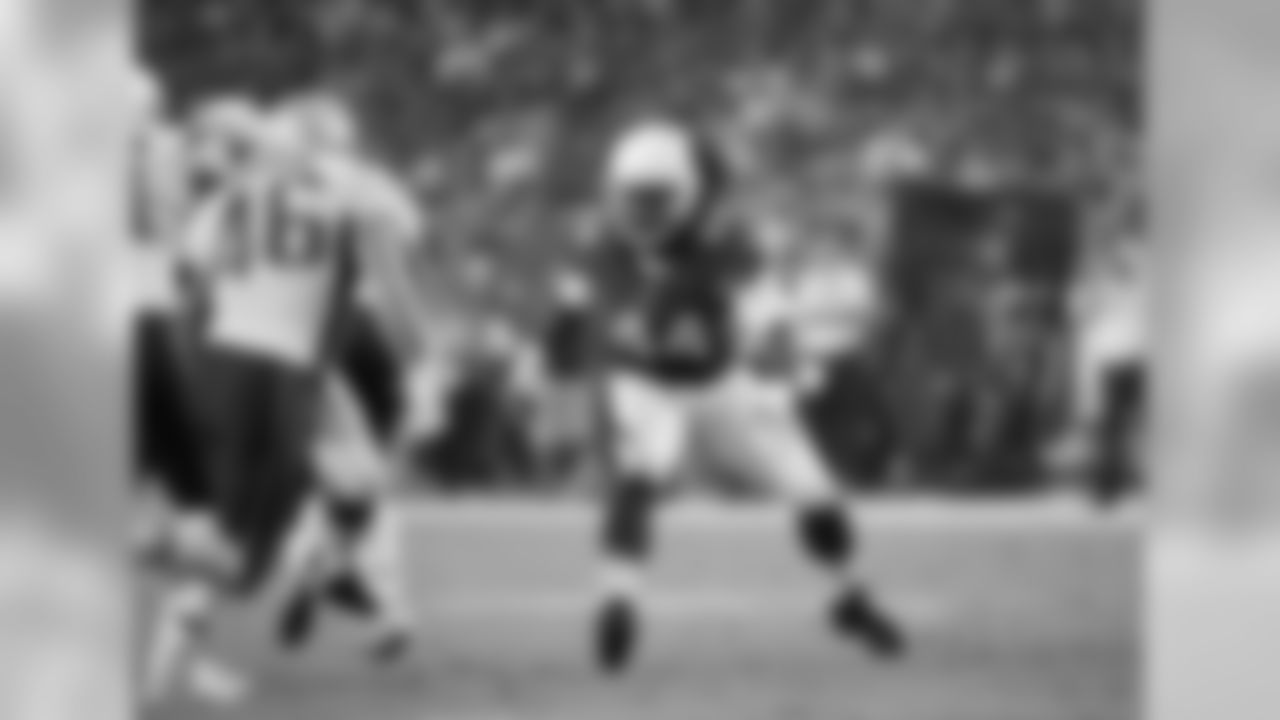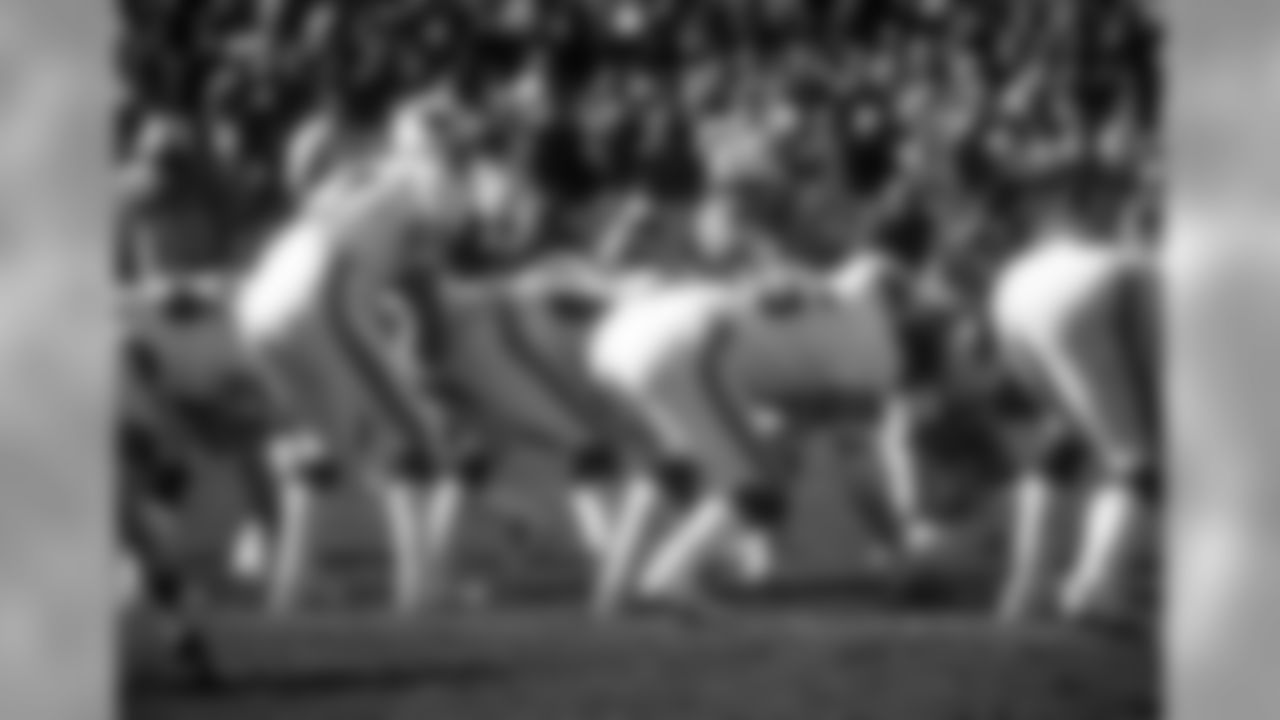Pictures of the Top 10 Cardinals in week 1, according to their Pro Football Focus player grade.

84 TE Jermaine Gresham - 75.3

55 LB Chandler Jones - 75.7

69 G Evan Mathis - 77.5

44 LB Markus Golden - 78.2

51 LB Kevin Minter - 80.2

21 CB Patrick Peterson - 81.2

31 RB David Johnson - 81.4

93 DT Calais Campbell - 81.4

11 WR Larry Fitzgerald - 86.2

22 SS Tony Jefferson - 86.3
On Sunday, the Tampa Bay Buccaneers will play their second straight road game to open the 2016 season, this time in Glendale, Arizona against the Cardinals. It will be the 19th meeting between the two teams and the winner will take the all-time lead in the head-to-head battle (more on the Bucs-Cardinals series history). Arizona is coming off a deep run into the 2015 playoffs and will be hungry for a win after a heartbreaking opening-week loss to the New England Patriots. The Buccaneers are seeking their first 2-0 start since 2010.
To get that two-win boost towards the playoffs, the Buccaneers will have to put pressure on veteran quarterback Carson Palmer and keep track of such versatile defenders as Tyrann Mathieu and Deone Buccanon. Here's a closer look at the challenges the Buccaneers will face on Sunday when they take on the Cardinals in University of Phoenix Stadium.
HEAD COACH

Bruce Arians coached 19 years in the NFL (and another 18 at the college level) before landing his first head coaching job, and he tasted almost nothing but success along the way. In those 19 years, with six teams, Arians helped coach his team to a winning record 15 times and to a spot in the playoffs 13 times. It's no surprise, then, that the Cardinals have done a lot of winning since he took over in 2013.
Arians actually guided an NFL team for the first time in 2011, when he served as the interim coach in Indianapolis while Chuck Pagano was being treated for leukemia. After the Colts went 9-3 under his watch and made the playoffs with an 11-5 record, Arizona came calling. Over Arians' first three seasons at the helm, the Cardinals have gone 34-14 in the regular season, a .708 winning percentage that trailed only those of Denver, New England and Seattle in that span. After a 10-6 debut season that was not good enough to qualify for the postseason, the Cardinals have gone to the playoffs in consecutive seasons for the first time since 2008-09. Last year, Arizona set a franchise record with 13 wins and advanced to the NFC Championship Game for just the second time.
A wishbone quarterback at Virginia Tech in the '70s, Arians started his coaching career as a graduate assistant at his alma mater in 1975. After stops at Mississippi State and Alabama, he got his first head coaching opportunity at Temple in 1983. After six seasons with the Owls, Arians made the leap to the NFL with the Kansas City Chiefs in 1989, serving as the running backs coach for four seasons on a Marty Schottenheimer staff that also included future NFL head coaches Bill Cowher and Tony Dungy.
Return trips to Mississippi State and Alabama followed, as did a single year (1996) as the New Orleans Saints' tight ends coach, before Arians went back to the NFL for good as the quarterbacks coach at Indianapolis. His arrival happened to coincide with the draft selection of Peyton Manning, and Arians spent three years helping the young quarterback develop into a future MVP. That helped Arians land a coordinator position in Cleveland (2001-03) and later Pittsburgh (2007-11). He won a Super Bowl ring after the 2008 season when the Steelers coincidentally beat the Cardinals in Super Bowl XLIII.
WATCH: THURSDAY'S PRESS CONFERENCES
Arians is a strong motivator who is very good at connecting with his players, even if he is brutally honest and hard on them on the practice field. He is considered an aggressive in-game manager.
OFFENSE

The Cardinals had the NFL's top-ranked offense in 2015, as ranked by yards, and they scored more points (489) than every team except the Carolina Panthers (500). They were the only team to rank in the top 10 in both rushing and passing, and with veteran Carson Palmer at the helm they threw for more yards than every team except the New Orleans Saints.
Palmer had the best season of his 12-year career in 2015, at the age of 35 (he turned 36 in December). In addition to 4,671 yards, a 63.7 completion rate and a stellar 35-11 TD-INT ratio, Palmer led the NFL with career-best mark of 8.7 yards per pass attempt. He helped perennial star Larry Fitzgerald, John Brown and Michael Floyd emerge as the most prolific WR trio in the NFL. Fitzgerald caught 109 passes for 1,215 yards, Brown added his own 1,000-yard campaign and averaged 15.4 yards per catch, and Floyd tallied 849 yards and 16.3 per reception. Then-rookie running back David Johnson also emerged as a big-play threat in the passing game, averaging 12.7 yards on 36 catches, the top mark of any running back in the league.
That entire cast is intact in 2016, along with running backs Chris Johnson and Andre Ellington and tight end Jermaine Gresham. David Johnson, who didn't have a single game with double-digit carries until Week 13 but was one of the most productive players in the NFL down the stretch, is now the clear leader in the backfield. In the 2016 opener, he ran 16 times for 89 yards and a touchdown and caught four passes for 43 yards. The 6-1, 224-pound Johnson has been compared to Matt Forte, with great hands, speed and the ability to line up all over the formation.
Palmer's favorite target in the opener was the ageless Fitzgerald, who has over 1,000 career receptions and has been selected to nine Pro Bowls. Fitzgerald caught eight passes for 81 yards and two touchdowns against New England, much of it in the fourth quarter when the Cardinals were fighting the clock and every play was critical. Still, with Brown and Floyd in the mix, opposing defenses can't afford to pay too much attention to the veteran wideout.
Unsurprisingly given that roster of playmakers, the Cardinals were among the best big-play offenses in the NFL last year. They ranked first in plays that gained 10 or more yards, with 255 of them, and second in plays of 20 or more yards, with 78. Arizona also moved the chains, converting on 47.0% of its third downs to rank third in the NFL. Despite all of that, the Cardinals were just 24 in number of 10-play drives recorded; Johnson, who had 13 touchdowns, often broke off a long score before that 10th play was needed.
A look back at all of the match-ups between the Buccaneers and the Cardinals.

Sep. 18 2016, L 7 - 40

Sep. 29 2013, L 10 - 13

Oct. 31 2010, W 35 - 38

Nov. 4 2007, W 17 - 10

Jan. 2 2005, L 12 - 7

Sep. 28 1997, W 19 - 18

Oct. 20 1996, L 13 - 9

Dec. 27 1992, W 3 - 7

Sep. 6 1992, W 23 - 7

Nov. 26 1989, W 13 - 14

Sep. 18 1988, L 24 - 30

Dec. 20 1987, L 14 - 31

Nov. 10 1985, W 16 - 0

Oct. 16 1983, L 27 - 34

Sep. 27 1981, W 20 - 10

Dec. 18 1977, W 17 - 7Not Pictured:Nov. 8 1987, L 31 - 28Dec. 21 1986, L 21 - 17Oct. 12 1986, L 19 - 30
With Palmer in a groove for much of last season, the Cardinals often set the tone with their passing attack before putting it away on the ground. Arizona ran on 38.6% of its plays in the first half last year, ranking just 21st in that category. In the second half, the Cardinals ran on nearly half of their plays and were the third-most ground-heavy team in the league.
In addition to blocking for the NFL's eighth-ranked rushing attack, the Cardinals' offensive line allowed only 27 sacks in 562 pass attempts last year, ranking sixth in the NFL in that category. That sort of protection has allowed Palmer to post a passer rating of 100 or better in 12 of his last 17 starts. Arizona's O-Line has been built largely through free agency, including the key acquisitions of left tackle Jared Veldheer in 2014 and Mike Iupati in 2015.
Former Eagles Pro Bowler Evan Mathis is the new addition to this unit, stepping in at right guard, though he sustained a foot injury last Sunday that could keep him out of Sunday's game. The unproven spot is right tackle, where 2015 first-round pick D.J. Humphries has stepped in after not playing a down in his rookie season despite being healthy. Overall, Football Outsiders ranked Arizona's front line as being third-best in the NFL in run-blocking in 2015 and fifth-best in pass blocking.
DEFENSE

The Cardinals operate out of a 3-4 base scheme and have notable playmakers om all three levels of their defense. Unlike the Arizona offense, which is largely intact from a year ago, the Cardinals added several key pieces on defense in 2016, particularly in an effort to boost their pass rush.
The big offseason move was the trade for Chandler Jones, who had 12.5 sacks for New England in 2015 and paid immediate dividends against his former team on Sunday with a sack and a fumble recovery. The Cards also bolstered their front with first-round pick Robert Nkemdiche, who they believe can get to the passer form one of the two down-linemen spots that flank nose tackle Corey Peters.
FEATURE: JOHN LYNCH - A CASE FOR CANTON
Dwight Freeney, who is now in Atlanta, led the Cardinals with eight sacks last year. The leader among returning players is veteran lineman Calais Campbell, who at 6-8 and 282 pounds is a different sort of challenge for the Bucs' interior blockers. Campbell, who has been to the last two Pro Bowls, is the definition of steady: He has never had a double-digit sack season but he's finished between 5.0 and 9.0 QB takedowns for seven straight years. Also, as one might expect from a lineman of his height, Campbell is second among all NFL D-Linemen in passes defensed over the last five seasons.
Arizona's ranked just 20th in sacks last year, with 35, and 19th in sacks per pass play. That's one of the few areas in which the Cardinals weren't near the top of the league rankings. As noted above, the Cards had the only offense to place in the top 10 in both rushing and passing. The defense matched that, ranking sixth against the run and eighth against the pass, though there were three other teams that also had dual top-10 finishes (Denver, Kansas City and Seattle). Most importantly, Arizona tied for seventh in points allowed, giving up an average of 19.6 per contest.
The 6-5, 265-pound Jones, obviously an edge rusher, occupies one outside linebacker spot, and 2015 second-round pick Markus Golden takes the other edge after a strong finish to his rookie campaign. In between is a traditional inside linebacker in the 246-pound Kevin Minter and one vastly different player, Deone Bucannon, who is listed as a "$LB" or "dollar linebacker" on both the roster and depth chart. Drafted as a safety in the first round in 2014, Bucannon has since morphed into something of a hybrid linebacker at 6-1 and 211 pounds. After he made so many rugged plays in the box as a rookie, the Cardinals created the $LB spot for him and he immediately led the team in tackles. Last year, he and Carolina's Thomas Davis were the only two players in the NFL to combined 100+ tackles with at least three sacks, at least one interception and at least three forced fumbles.
That aggressive group helped the Cardinals defense force 453 yards worth of negative plays in 2015, the fourth-highest total in the league, including 54 runs that were stopped behind the line of scrimmage (tied for fifth). Arizona also forced 33 turnovers, second in the NFL only to Carolina's 39. The Cardinals also were not particularly susceptible to the big play, giving up only 188 plays of 10 or more yards, tied for fourth-fewest in the league.
The Cardinals have another unique talent patrolling the secondary in fourth-year safety Tyrann Mathieu, who was in the conversation for NFL Defensive Player of the Year last fall before suffering a torn ACL in Week 15. Though he missed the last two games (and the playoffs, of course), Mathieu still recorded a team-high five interceptions, broke up six passes and also had 11 tackles for loss. He's joined in that backfield by cornerback Patrick Peterson, who has followed each of his five NFL seasons with a trip to the Pro Bowl. Peterson's 17 interceptions since 2011 rank third in the league and that span, and that's despite quarterbacks often just choosing to ignore his territory. Last season, according to Pro Football Focus, Peterson allowed the fewest receiving yards in the NFL to players he was covering, tying with Seattle's Richard Sherman for the fewest catches given up.
Third-round rookie Brandon Williams has stepped right into the starting lineup opposite Peterson, as the Cardinals have been hit by some injuries and defections at that spot. In fact, Arizona claimed cornerback Tharold Simon off waivers from the Seahawks just this week to address that shortcoming. Before that move, the team had only four cornerbacks on the roster, including special teams ace Justin Bethel, though Mathieu could probably fill in if necessary. In his first career start, New England quarterback Jimmy Garoppolo threw for 264 yards, one touchdown and no interceptions against the Arizona defense in Week One, often targeting Williams' side of the field.
SPECIAL TEAMS

Arizona's special teams units had a bit of a rough start to the season last Sunday. Kicker Chandler Catanzaro only got to attempt one kick, but it was a potential game-winner from 47 yards out that he hooked to the left. Punter Drew Butler averaged just 36.0 yards on five punts, with a net of 32.4. New England repeatedly elected to kick off high and right around the goal line, leading to four returns by Andre Ellington that averaged just 15.3 yards per try. As a result, on six kickoffs, the home team had an average drive start of its own 18-yard line.
That said, one game is a small sample size and the Cardinals' kicking duo performed relatively well last year. Butler recorded a gross punting average of 42.9 and a net of 35.4 while Catanzaro was true on 28 of 31 field goal tries for an excellent 90.3% success rate. Meanwhile, Bethel made the Pro Bowl as a special teamer for the third year in a row, led the team with 14 kick-coverage stops; he also has three blocked field goals on his resume.
In addition to his value on defense, Peterson gives Arizona something extra in the return game, which was actually the ticket to his first Pro Bowl in 2011. Peterson had four punt return touchdowns in his first five seasons (2011-15), and only Darren Sproles has had more in that span. David Johnson was Arizona's best kickoff returner last season, averaging 27.2 yards per runback, but that job went to Ellington to start this season.






















